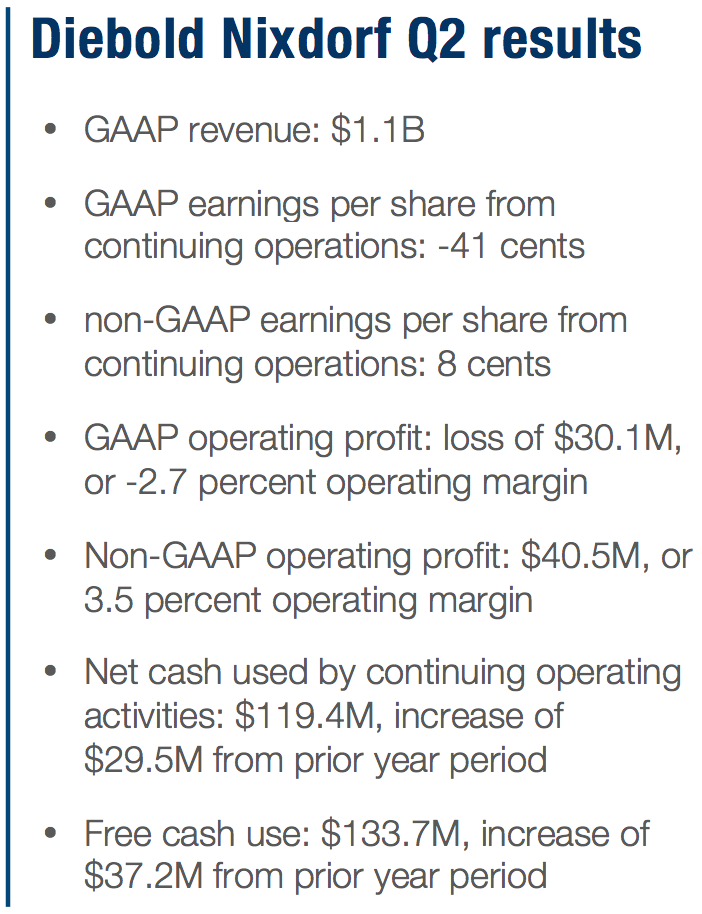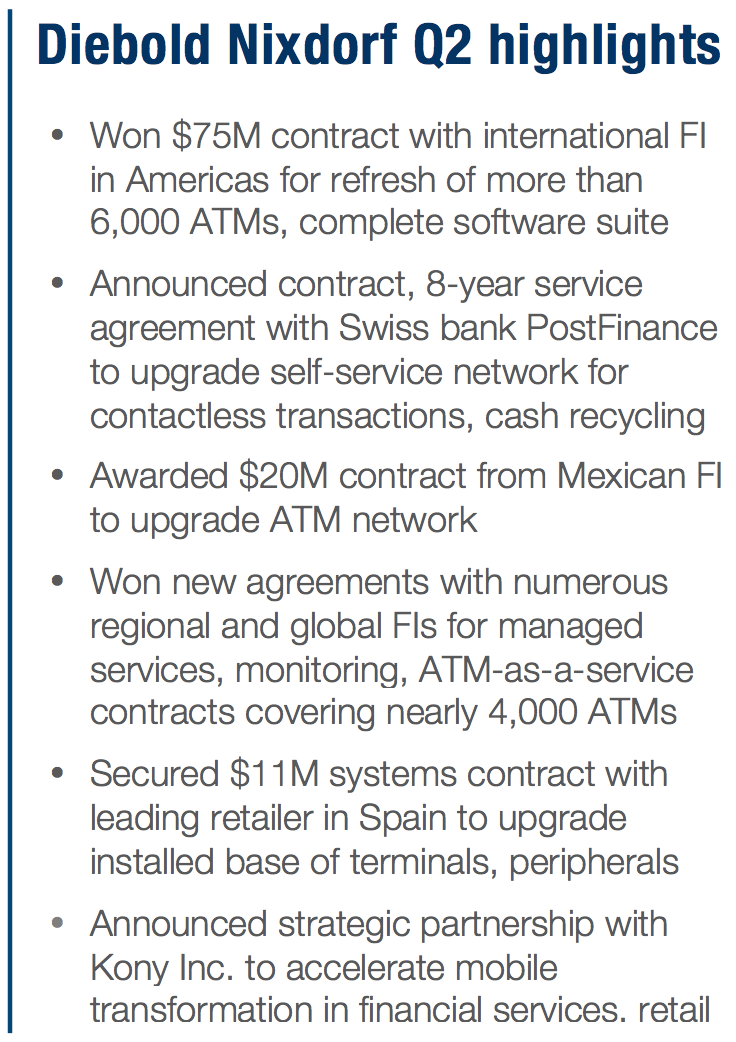


In a Q2 earnings call with analysts, Diebold Nixdorf executives detailed events leading up to the announcement two weeks ago that the company would not meet its initial full-year earnings expectations.
 photo istock
photo istock
There were really no surprises in the Diebold Nixdorf earnings call on Tuesday — only explanations.
Executives spent the hour enumerating the various obstacles and events that had led up to a July 5 announcement of a downward revision to earnings expectations for the full year, a move that set up its own set of expectations for a disappointing earnings call before the market opened on July 19.
"Disappointed" was exactly the word Diebold Nixdorf CEO Andy Mattes used to express his misgivings about the company's performance to date in 2017.
"Two weeks ago we made significant revisions to our 2017 outlook," Mattes said at the top of the call. "I'm personally very disappointed and I know the management team feels the same.
Mattes said that the biggest change to the company's expectations for the year is the top line, with revenue falling approximately $300 million short of the company's initial forecast.
 "The weakness is predominantly tied to our banking hardware volume which also had a direct negative correlation to our installation services business," Mattes said. "And while the recent order activity demonstrates the market acceptance of our new solutions and the competitive advantage we bring to our customers, the pace of orders to date is still short of our expectations."
"The weakness is predominantly tied to our banking hardware volume which also had a direct negative correlation to our installation services business," Mattes said. "And while the recent order activity demonstrates the market acceptance of our new solutions and the competitive advantage we bring to our customers, the pace of orders to date is still short of our expectations."
In answer to analysts' questions about slower-than-expected orders on the financial services side, particularly in the Americas, Mattes cited changes in the banking industry.
The "new normal" in banking he said, was larger more complex orders — often including hardware, software and services in a single package. Purchases of this size typically require more decision time, as well as approval from more decision-makers at higher levels of management.
"So we would expect these longer project-related cycles to be the new norm and we're adjusting our thinking and our planning accordingly," Mattes said.
Other issues affecting the company's bottom line related to the integration of Diebold Inc. and Wincor Nixdorf.
For instance, Mattes said that the companies had expected that the less-dominant player in the American and European markets would experience some run-off in service contracts, but that they had not expected it to occur so rapidly.
The company quickly found itself with too many techs in one part of the market and two few in another. But laying off underutilized techs with valuable product knowledge was not an option.
"That's when the scheduling gets so important, as long as the schedules are rock solid you can plan for that. The minute that the customer accelerates one and slows down the other, our scheduling gets out of sync and you have underutilization and margin pressure."
The combined companies also encountered something of a sales blackout in the U.K. while addressing the concerns of the Competition and Markets Authority. That situation was settled only last month with an agreement to sell off the company's Diebold UK and Ireland unit to Cennox.
"The fact that we were allowed to combine our business in the U.K. for over 12 months was: a) unanticipated; and b) created a very awkward absence of our company in what's the third largest developed market in the world."
 With the sell-off to Cennox, the company is now free to talk with potential customers in the U.K.
With the sell-off to Cennox, the company is now free to talk with potential customers in the U.K.
"With us being back in the market, I would also expect us to have a better opportunity to participate in that huge opportunity in that the British banks still are amongst some of the most active when it comes to technology refresh," Mattes said.
Finally, Mattes said, the company simply underestimated the amount of change and distraction that would accompany the integration of two very large companies with different business cultures operating in two very different regulatory environments on opposite sides of the Atlantic.
Needless to say, the company's competitors were not sitting still while all of these issues played out. Mattes conceded that this had cost the company some deals over the past year.
Ultimately, it all amounted to a necessary pullback in expectations for 2017. However, Mattes said that, having acknowledged the problems with execution, the company was now working to solve them.
"One of the biggest things that we've done is we've truly refocused our company in the last month on customer engagement and customer interaction," he said. "And yes, you can blame us for having been too inwardly focused, especially in the second half of last year. We've taken very aggressive actions to change that."
Suzanne’s editorial career has spanned three decades and encompassed all B2B and B2C communications formats. Her award-winning work has appeared in trade and consumer media in the United States and internationally.
Sign up now for the ATM Marketplace newsletter and get the top stories delivered straight to your inbox.
Privacy PolicySeptember 9-11, 2024 | Charlotte, NC